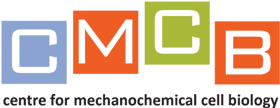

 Research summary
Research summary
We are interested in how the animal body plan is shaped through a complex interplay between biochemical and mechanical processes acting during embryonic development. The lab is focused on critical events during time of gastrulation, where germ layers become specified and extensive morphogenetic rearrangements occur to form specialized structures in the embryo. We especially aim to identify molecular, cellular and physical mechanisms regulating vital processes such as cell and tissue morphogenesis, cell-cell adhesion and cell specification. The current research focus is on regulatory processes in the development of the early forebrain and mechanisms controlling cell dynamics and migration during embryonic development. We are using interdisciplinary approaches including quantitative live cell imaging, biophysical measurements, biochemical and genetic tools (CRISPR/Cas9), genomics/transcriptomics and mathematical modeling from subcellular, to tissue level. We are utilizing the zebrafish embryo as a vertebrate model system and use a combination of in vivo and in vitro assays to study these questions.
> Faculty page is here
> Wellcome-Warwick Quantitative Biomedicine (QBP) Programme page is here
In spring 2021 we moved into a new state-of-the-art Interdisciplinary Biomedical Research
Buliding (IBRB) on Gibbet Hill Campus.

Inman A. et al. (2025) A multi-tiered mechanical mechanism shapes the early neural plate.
Nat Commun. doi: 10.1038/s41467-025-61303-1
Inman A. et al. (2021) Feeling the force: multiscale force sensing and transduction at the cell-cell interface.
Sem Cell Dev Biol. doi: 10.1016/j.semcdb.2021.06.006
Capek D. et al. (2019) Light-activated Frizzled7 reveals a permissive role of non-canonical wnt signaling in mesendoderm cell migration.
eLife. doi: 10.7554/eLife.42093
Smutny M. et al. (2017) Friction forces position the neural anlage.
Nat Cell Biol. doi: 10.1038/ncb3492
Ruprecht V. et al. (2015) Cortical contractility triggers a stochastic switch to fast amoeboid cell motility.
Cell. doi: 10.1016/j.cell.2015.01.008.



